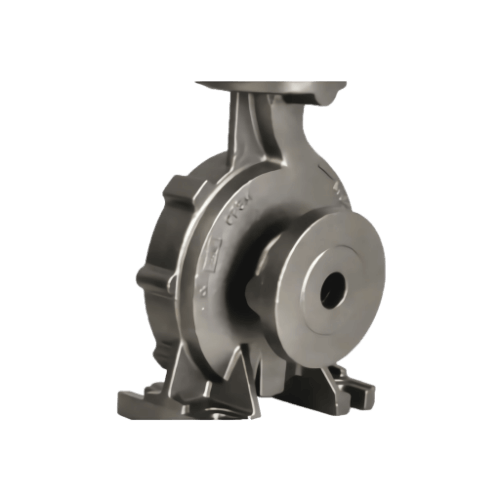Alloy Steel Casting: Properties, Applications, and Advantages
Alloy steel casting is a process of creating a metal object by pouring molten alloy steel into a mold and allowing it to cool and solidify. This method of casting produces a strong, durable, and corrosion-resistant material that is widely used in a variety of industries. The process of alloy steel casting involves several steps that must be carefully executed to ensure a high-quality finished product.
One of the key benefits of alloy steel casting is its ability to produce complex shapes and intricate designs with precision. This makes it a popular choice for manufacturing parts and components for industries such as aerospace, automotive, and construction. Additionally, alloy steel casting is known for its ability to withstand high temperatures and pressure, making it ideal for use in harsh environments.
Overall, alloy steel casting is a reliable and efficient method of producing high-quality metal objects. Its versatility and durability make it a popular choice for a wide range of applications, and its ability to produce complex shapes and designs with precision sets it apart from other casting methods. With proper execution and attention to detail, alloy steel casting can produce products that meet the highest standards of quality and performance.
Overview of Alloy Steel Casting
What is Alloy Steel Casting?
Alloy steel casting is a process that involves pouring molten alloy steel into a mold to create a specific shape. Alloy steel is a type of steel that contains additional elements such as manganese, silicon, nickel, chromium, and molybdenum, which provide improved properties such as increased strength, corrosion resistance, and wear resistance.
Advantages of Alloy Steel Casting
One of the main advantages of alloy steel casting is its ability to produce complex shapes with high accuracy and repeatability. This is because the molten steel can be poured into intricate molds, allowing for the creation of intricate shapes with tight tolerances.
Another advantage of alloy steel casting is its strength and durability. Alloy steel is known for its high strength and toughness, making it ideal for applications where strength and durability are critical.
Alloy steel casting also offers excellent corrosion and wear resistance, making it suitable for use in harsh environments where other materials may fail.
Applications of Alloy Steel Casting
Alloy steel casting is used in a wide range of applications, including the automotive, aerospace, and defense industries. It is commonly used to produce parts such as gears, bearings, valves, and engine components.
In the automotive industry, alloy steel casting is used to produce engine and transmission components such as connecting rods, crankshafts, and camshafts. In the aerospace industry, it is used to produce parts for aircraft engines and landing gear.
Overall, alloy steel casting is a versatile and reliable process that offers numerous advantages over other manufacturing methods. Its ability to produce complex shapes with high accuracy and repeatability, combined with its strength, durability, and resistance to corrosion and wear, make it an ideal choice for a wide range of applications.

Types of Alloy Steel Casting
Low Alloy Steel Casting
Low alloy steel casting refers to steel casting with an alloy content of less than 8%. These alloys are typically added to improve the mechanical properties of the steel, such as strength, toughness, and wear resistance. Low alloy steel casting is commonly used in applications where the part needs to withstand high stress or wear, such as in mining equipment, pumps, and valves.
Some examples of low alloy steel casting include:
- ASTM A148 Grade 80-50
- ASTM A217 Grade WC6
- ASTM A352 Grade LCC
High Alloy Steel Casting
High alloy steel casting refers to steel casting with an alloy content of 8% or more. These alloys are typically added to improve the corrosion resistance, heat resistance, or wear resistance of the steel. High alloy steel casting is commonly used in applications where the part needs to withstand high temperatures or corrosive environments, such as in chemical processing, power generation, and aerospace.
Some examples of high alloy steel casting include:
- ASTM A297 Grade HK
- ASTM A494 Grade M35-1
- ASTM A743 Grade CF8C
Special Alloy Steel Casting
Special alloy steel casting refers to steel casting with unique alloy compositions that are tailored to specific applications. These alloys may include a combination of elements such as nickel, cobalt, tungsten, or molybdenum, and are often used in extreme environments where standard alloys would fail.
Some examples of special alloy steel casting include:
- Inconel 718
- Hastelloy X
- Stellite 6
In summary, alloy steel casting can be classified into three main categories: low alloy steel casting, high alloy steel casting, and special alloy steel casting. Each category has unique properties that make it suitable for specific applications.
Manufacturing Process of Alloy Steel Casting
Pattern Making
The first step in the manufacturing process of alloy steel casting is pattern making. It involves creating a pattern or model of the final product. This pattern can be made of wood, metal, or plastic. The pattern is then used to create the mold in which the molten alloy steel will be poured.
Molding
Once the pattern is created, it is used to make a mold. The mold is made of sand, which is packed around the pattern. The sand is then compacted and the pattern is removed, leaving a cavity in the sand in the shape of the final product. This cavity is called the mold.
Melting and Pouring
The next step is melting and pouring the alloy steel into the mold. The alloy steel is melted in a furnace and then poured into the mold. It is important to pour the molten steel at the right temperature and at the right speed to ensure that the final product has the desired properties.
Cooling and Finishing
After the molten alloy steel is poured into the mold, it is allowed to cool and solidify. Once the steel has solidified, the mold is removed, and the casting is cleaned up. This involves removing any excess material, such as the sprue and riser. The casting is then inspected for any defects and finished as necessary.
Overall, the manufacturing process of alloy steel casting is a complex and precise process that requires skilled workers and specialized equipment. By following these steps, manufacturers can produce high-quality alloy steel castings that meet the needs of their customers.
Quality Control in Alloy Steel Casting
Non-Destructive Testing
Non-Destructive Testing (NDT) is the process of evaluating the properties of materials without causing damage to the material being tested. NDT is an essential part of quality control in alloy steel casting. It is used to detect surface and subsurface defects, such as cracks, porosity, and inclusions. Common NDT methods used in alloy steel casting include visual inspection, magnetic particle inspection, ultrasonic testing, and radiography.
Visual inspection is the simplest and most widely used NDT method. It involves a visual examination of the surface of the casting for defects such as cracks, porosity, and inclusions. Magnetic particle inspection is used to detect surface and near-surface defects. It involves applying a magnetic field to the casting and then applying magnetic particles to the surface. Ultrasonic testing uses high-frequency sound waves to detect internal defects in the casting. Radiography is used to detect internal defects by passing X-rays or gamma rays through the casting.
Chemical Analysis
Chemical analysis is an important part of quality control in alloy steel casting. It is used to determine the composition of the alloy and to ensure that it meets the required specifications. Chemical analysis is typically performed using spectroscopy, which involves measuring the absorption or emission of light by the alloy.
Mechanical Testing
Mechanical testing is used to evaluate the mechanical properties of the alloy, such as its strength, ductility, and toughness. It is an essential part of quality control in alloy steel casting. Common mechanical tests used in alloy steel casting include tensile testing, hardness testing, and impact testing.
Tensile testing involves applying a tensile load to the casting and measuring the resulting deformation. Hardness testing involves measuring the resistance of the casting to indentation or scratching. Impact testing involves measuring the energy required to fracture the casting.
In conclusion, quality control is a critical aspect of alloy steel casting. Non-destructive testing, chemical analysis, and mechanical testing are essential tools for ensuring that the alloy meets the required specifications. By using these methods, manufacturers can produce high-quality alloy steel castings that meet the demands of their customers.
Advancements in Alloy Steel Casting
New Materials and Alloys
In recent years, there have been significant advancements in the development of new materials and alloys for alloy steel casting. These new materials and alloys have improved the strength, durability, and corrosion resistance of alloy steel castings, making them more suitable for a wide range of applications.
One of the most promising new materials is high-strength low-alloy (HSLA) steel. HSLA steel is a type of alloy steel that contains small amounts of carbon, manganese, and other elements. It has a higher strength-to-weight ratio than traditional steel, making it ideal for use in applications where weight is a concern.
Another new alloy that has gained popularity in recent years is nickel-chromium-molybdenum (Ni-Cr-Mo) steel. This alloy is highly resistant to corrosion and has excellent strength and toughness, making it ideal for use in harsh environments.
Improved Manufacturing Techniques
Advancements in manufacturing techniques have also contributed to the development of high-quality alloy steel castings. One of the most significant improvements has been the use of computer-aided design (CAD) and computer-aided manufacturing (CAM) software. This software allows manufacturers to create highly precise and complex molds, resulting in high-quality castings with minimal defects.
Another improvement has been the use of vacuum casting. Vacuum casting removes air and other impurities from the molten metal, resulting in a cleaner and more uniform casting.
Automation and Robotics
Automation and robotics have also played a significant role in the advancement of alloy steel casting. Automated systems can perform repetitive tasks with high precision and accuracy, resulting in consistent and high-quality castings.
Robotics has also been used to improve safety in the casting process. Robots can perform tasks that are too dangerous or difficult for humans, such as pouring molten metal or removing castings from the mold.
Overall, these advancements in alloy steel casting have resulted in stronger, more durable, and corrosion-resistant castings that are suitable for a wide range of applications.
